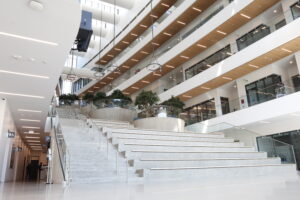By: Karissa Ketter, News Writer
SFU assistant professor Dr. Ahmed Al-Rawi is leading The Disinformation Project to study the effects of international state-run trolls. These are government sponsored internet trolls who are “magnifying controversial false claims, pushing negative views, and attacking any voices critical of their own regimes,” according to an SFU email.
“I was surprised to see that the Iranian, Russian, Arabs, as well as the Chinese state-run trolls, [had been] talking about Canadian issues for a very long time. This has been ongoing for probably a decade,” said Al-Rawi in an interview with The Peak.
Throughout his study, Al-Rawi found that “the term ‘fake news’ on social media is like a hollow term — it’s lost its meaning.” While it can be a weaponized term to attack opponents, it is commonly used for memes and jokes, he explained.
From analyzing Twitter and Facebook, Al-Rawi discovered some patterns in the rhetoric pushed by trolls. For instance, Russia and Iran “were trying to sow division in Canadian society.”
Al-Rawi said when discussing socially sensitive topics, such as immigration policies or controversial political elites, “the Iranian state-run trolls affiliated themselves more with the far-left, whereas the Russian state-run trolls affiliated themselves more with the far-right.”
A prevalent example of this was the hundreds of memes and images created by Russian trolls to attack Justin Trudeau before the 2015 feneral election. The Iranian trolls — critical of Stephen Harper — perpetuated claims that he was supportive of ISIS and planted by the CIA, Al-Rawi said.
Through this analysis, Al-Rawi found it was interesting that two state-run trolls used fake websites and distributed news items through social media.
“No one knows whether this kind of disinformation affects us” and our democracy, said Al-Rawi. “We know for sure that exposure to disinformation can influence certain people, but no one knows to which extent [ . . . ] Exposure to fake news does not mean influence.”
However, “as long as there is a potential and possibility of influencing people, we should be concerned about it,” said Al-Rawi.
“Many people assume that Canada is not involved in the manufacturing and dissemination of disinformation. I would beg to differ.”
Part of the study “examine[s] the way Canadian journalists cover stories about [ . . . ] fake news, disinformation, and misinformation.”
To accomplish this, Al-Rawi collected and analyzed over 100,000 news stories from Canadian journalists that mention key vocabulary such as “fake news” and “misinformation,” from the 1970s to 2020. Al-Rawi found that each decade had a “highlight.” For example, in the 1980s, the media discussed fake news in relation to HIV; in the 1990s, it was the war on Iraq.
Part of this study also involved over a dozen Canadian journalists to determine “what they think should be reported about fake news and their own idea of what fake news is.”
Through social media sites such as Twitter, Instagram, Facebook, and Discord, Al-Rawi said he sees evidence that users are involved in creating and disseminating fake news. “That’s a very worrying sign,” he added.
Al-Rawi hopes to see the findings of his studies published in the form of a small book in the future.















[…] Russian and Iranian internet trolls caused political interference in Canada’s 2015 election […]